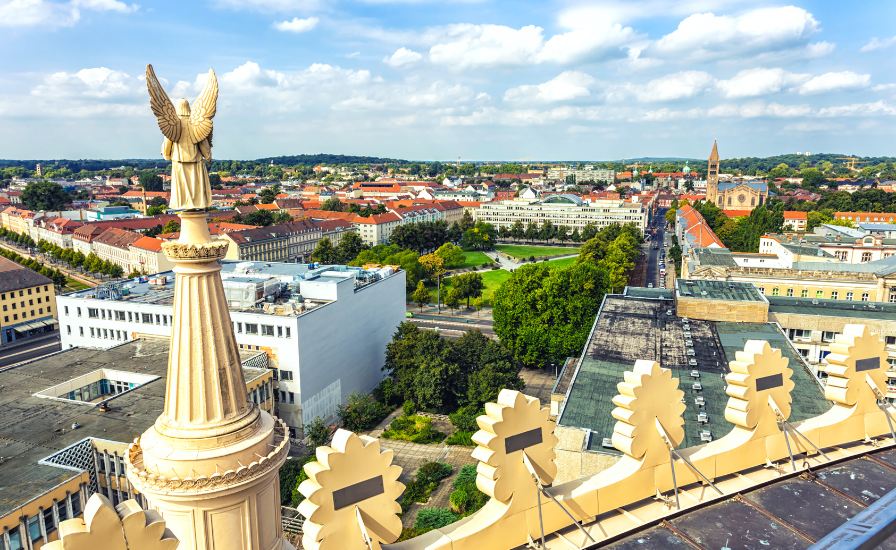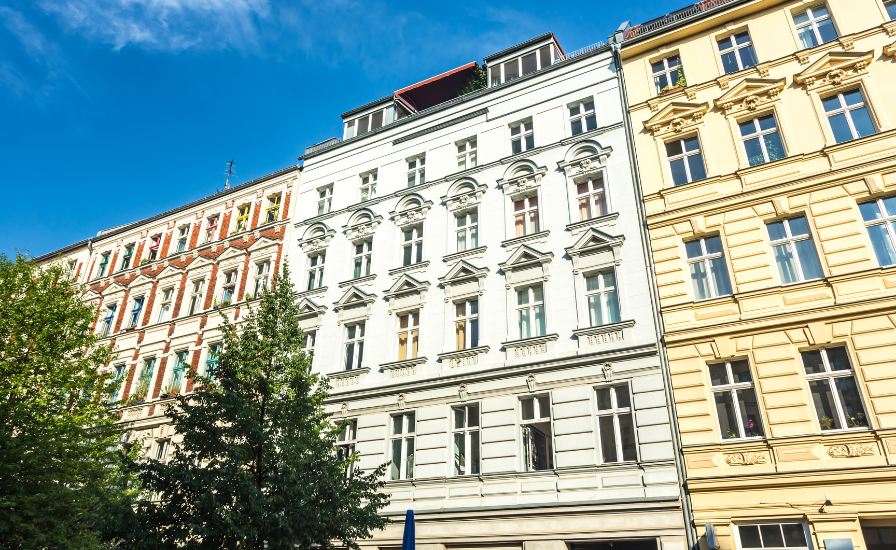Day 4: Day Trips and Relaxation

Morning: Potsdam
If you have an extra day in Berlin, consider a day trip to Potsdam. Just a short train ride away, Potsdam is known for its stunning palaces and gardens, particularly Sanssouci Palace. It’s a tranquil escape from the hustle and bustle of the city.
Afternoon: Charlottenburg Palace
Upon your return to Berlin, visit Charlottenburg Palace, the largest palace in the city. The opulent baroque architecture and beautifully landscaped gardens make for a peaceful and picturesque afternoon.
Evening: Relax at a Spa
After several days of exploration, a bit of relaxation is well-deserved. Berlin has numerous spas and wellness centers. Vabali Spa, located near the main train station, offers a luxurious experience with saunas, pools, and relaxation areas.
Day 5: Hidden Gems and Final Farewell

Morning: Prenzlauer Berg
Spend your final morning exploring Prenzlauer Berg. Known for its laid-back vibe and charming streets, this neighborhood is perfect for a relaxed breakfast and some last-minute shopping. The Mauerpark Flea Market, if you’re there on a Sunday, is a must-visit for unique souvenirs.
Afternoon: Treptower Park and Soviet War Memorial
Head to Treptower Park in the afternoon. It’s a beautiful green space along the Spree River, and it’s home to the impressive Soviet War Memorial. The park is a great place to unwind and reflect on your trip.
Evening: Farewell Dinner at TV Tower
Conclude your Berlin adventure with a farewell dinner at the TV Tower (Fernsehturm). The revolving restaurant offers stunning views of the city, making it the perfect spot to reminisce about your days in Berlin.
How Many Days Do I Need in Berlin?
Ultimately, the number of days you need in Berlin depends on your interests and pace. If you’re a first-time visitor aiming to hit all the major Berlin sightseeing spots and immerse yourself in the culture, a stay of 3 to 5 days is ideal. This itinerary gives you a well-rounded experience of the city’s historical landmarks, vibrant neighborhoods, and hidden gems.
However, if you have more time, Berlin has plenty more to offer. You could easily spend a week or more delving deeper into its art scene, exploring more neighborhoods, or taking additional day trips to nearby towns. No matter how long you stay, Berlin’s unique blend of history, culture, and modernity will leave you with unforgettable memories.
Pro Tips for Your Berlin Trip
Public Transport: Berlin’s public transport system is excellent. Invest in a Berlin WelcomeCard for unlimited travel and discounts at various attractions.
Language: While many Berliners speak English, learning a few basic German phrases can enhance your experience.
Weather: Berlin’s weather can be unpredictable. Pack layers and be prepared for rain, especially in the spring and fall.
Book in Advance: Popular attractions like the Reichstag Dome and TV Tower often require advance booking.
FAQs for Planning a Trip to Berlin
1. How many days do I need in Berlin?
To get a well-rounded experience of Berlin, including its major attractions, museums, and neighborhoods, a stay of 3 to 5 days is ideal. If you want to explore more deeply, consider staying for a week.
2. What are the must-see attractions in Berlin?
Some of the must-see attractions in Berlin include:
- Brandenburg Gate
- Reichstag Building
- Museum Island
- Berlin Cathedral
- East Side Gallery
- Checkpoint Charlie
- Holocaust Memorial
- Charlottenburg Palace
3. What is the best time to visit Berlin?
The best time to visit Berlin is from May to September when the weather is warm and many outdoor events and festivals take place. However, Berlin is a year-round destination, and each season offers its own charm.
4. How do I get around Berlin?
Berlin has an excellent public transportation system that includes buses, trams, U-Bahn (subway), and S-Bahn (urban rail). The Berlin WelcomeCard offers unlimited travel on public transport and discounts at many attractions.
5. Is Berlin expensive to visit?
Berlin is generally more affordable than other major European capitals. Accommodation, food, and public transport offer good value for money. There are also many free and low-cost attractions to enjoy.
6. Do I need to book attractions in advance?
For popular attractions like the Reichstag Dome and TV Tower, it’s recommended to book in advance to secure your spot and avoid long waiting times. Many museums and galleries also offer online ticketing.
7. What are some good day trips from Berlin?
Popular day trips from Berlin include:
- Potsdam, known for its stunning palaces and gardens
- Sachsenhausen Concentration Camp Memorial
- Spreewald, a UNESCO biosphere reserve with beautiful landscapes
8. Where should I stay in Berlin?
Some of the best neighborhoods to stay in Berlin include:
- Mitte: Central location with many attractions
- Kreuzberg: Known for its vibrant nightlife and diverse culture
- Prenzlauer Berg: Trendy area with cafes and boutiques
- Friedrichshain: Bohemian vibe with street art and bars
9. What should I pack for a trip to Berlin?
Depending on the season, pack comfortable walking shoes, weather-appropriate clothing, and a light jacket or sweater for cooler evenings. Don’t forget an umbrella or rain jacket, especially in spring and fall.
10. Is it safe to travel to Berlin?
Berlin is generally a safe city for tourists. As with any major city, be mindful of your belongings in crowded areas and use common sense to stay safe.
11. What are some local foods to try in Berlin?
Some must-try local foods include:
- Currywurst: Sausage with curry ketchup
- Döner kebab: A popular Turkish-German fast food
- Berliner Pfannkuchen: A traditional jelly-filled doughnut
- Eisbein: Pork knuckle, often served with sauerkraut
12. Can I use credit cards in Berlin?
Credit cards are widely accepted in Berlin, especially in hotels, restaurants, and shops. However, it’s a good idea to carry some cash for small purchases, as some places may only accept cash.
13. What language is spoken in Berlin?
The official language is German. However, English is widely spoken, especially in tourist areas, so you should have no trouble communicating.
14. Are there any free attractions in Berlin?
Yes, there are many free attractions in Berlin, including:
- Brandenburg Gate
- East Side Gallery
- Memorial to the Murdered Jews of Europe (Holocaust Memorial)
- Berlin Wall Memorial
- Tiergarten Park
Various museums on certain free-entry days
15. How can I experience Berlin’s nightlife?
Berlin’s nightlife is diverse, offering everything from techno clubs to jazz bars. Popular nightlife areas include Kreuzberg, Friedrichshain, and Mitte. Consider checking out iconic clubs like Berghain or enjoying a more laid-back evening at a local beer garden.
Planning your trip to Berlin can be a thrilling experience, and knowing how many days you need in Berlin will help you make the most of your visit. With this guide, you’re well on your way to an unforgettable Berlin adventure. Enjoy your Berlin city tour, take in all the amazing Berlin sightseeing spots, and immerse yourself in the vibrant culture of this incredible city. Safe travels!











